Technical Explanation |
|
Sliding Technology |
|
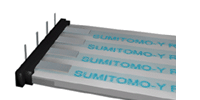 |
 |
Flexible flat cable consists of multiple flat conductors laminated between layers of insulation to produce a thin, flat multi-conductor wire that can be attached to a socket-type connector with a single touch. |
|
 |
 |
 |
Flexible flat cable is used for moving components in devices such as the print heads in a printer or the pickup in a CD drive and is required to be highly resistant to the type of sliding motion that causes conductor breakage. |
|
 |
 |
 |
For a curvature R in a sliding component, a differential strain arises between the inner and outer diameters of the conductor. |
|
 |
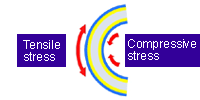 |
 |
This generates tensile stress on the outer side and compressive stress on the inner side. Particularly where R is small, the strain concentrates at localized points and the stresses acting on the conductor become considerable. |
|
 |
 |
 |
The stresses generated by this strain are thought to be the principal cause of conductor breakage. |
|
 |
 |
 |
The key issues in improving the sliding properties of a conductor are the suppression of the stresses occurring along the conductor and the prevention of localized concentrations of stress. |
|
 |
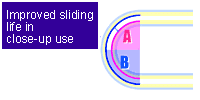 |
 |
In tape cable, the closer the conductor's internal bend diameter A is to its external bend diameter B, the smaller the strain and stress arising in the conductor and the longer the cable's working life when used with a sliding component. |
|
 |
 |
 |
Using thinner insulation has the effect of reducing the strain applied to the conductor. |
|
 |
 |
 |
At SEI, developments in insulation and conductor materials as well as in flexible flat cable production and installation technologies have allowed us to reduce the insulating material thickness to 1/3 of the whole and that of the conductor to 1/4 of the whole, thereby greatly improving the cable durability. |
|
 |
 |
 |
We have also achieved good durability in high-temperature environments.
With conventional adhesives, which are designed to provide good adhesion and workability at normal temperatures, performance tends to decline at high temperatures. This results in slack in the insulating material and strain being applied to the conductor as the temperature rises, thereby increasing the localized load on the conductor. |
|
 |
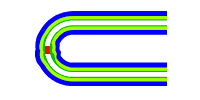 |
 |
Before long, the conductor breaks due to metal fatigue. |
|
 |
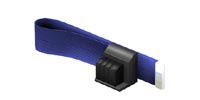 |
 |
Faced with the challenge to "develop an insulating material for flexible flat cable that provides minimal temperature-dependence without sacrificing workability", we used our accumulated expertise and experience in materials formulation and simulation technology to successfully develop and patent a new type of insulation. |
|
 |
 |
 |
With the increasing miniaturization of electronic devices, flexible flat cable is required to have a higher level of durability.
SEI is dedicated to the continued development of products that offer better durability and lower cost while still fully meeting the needs of our customers. |
|
|
 |
|